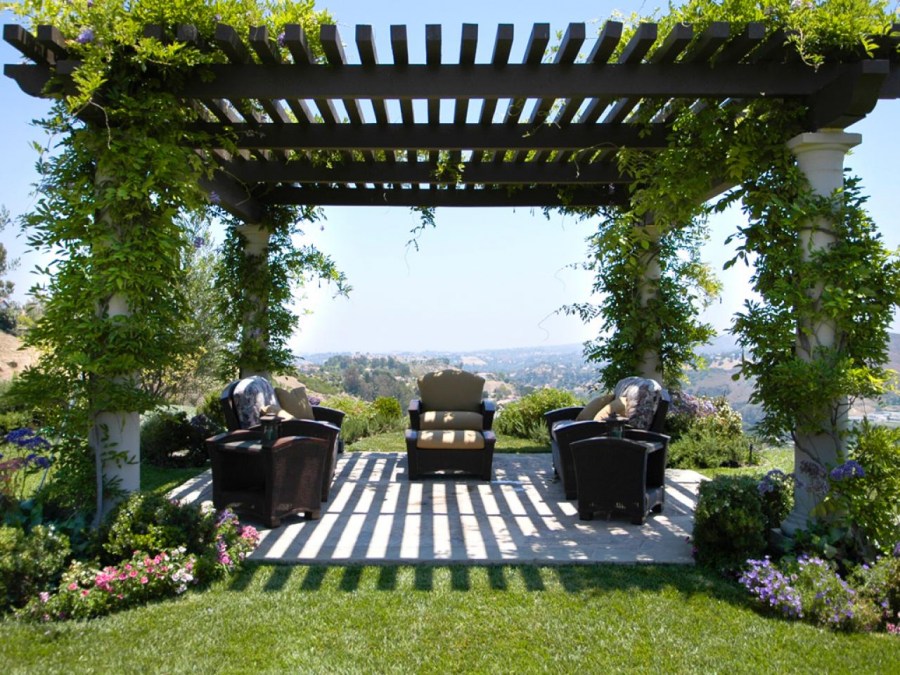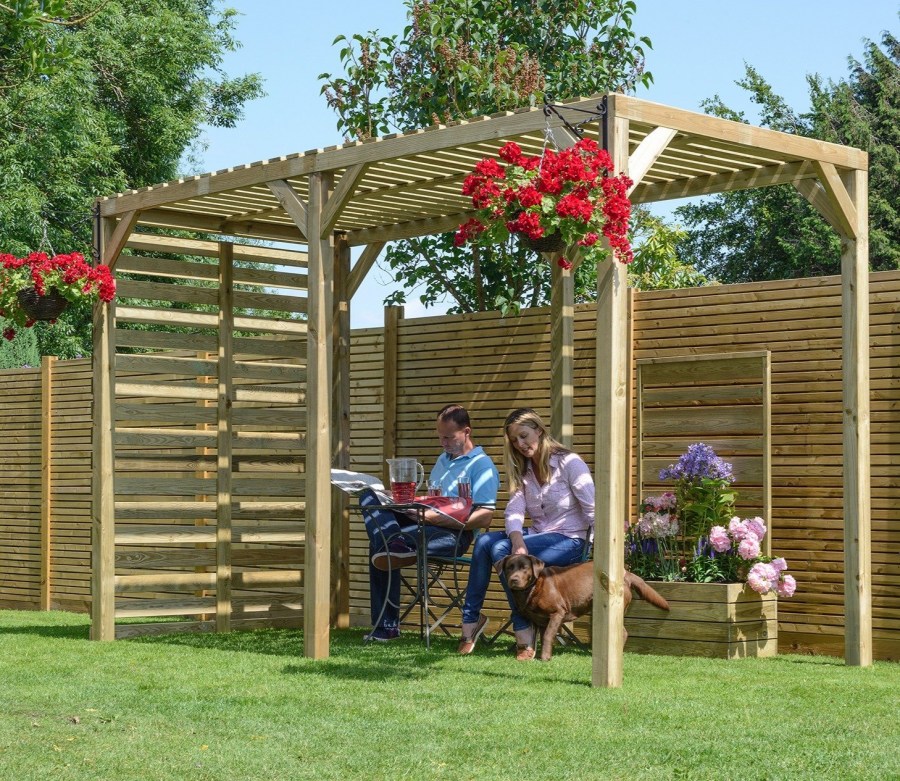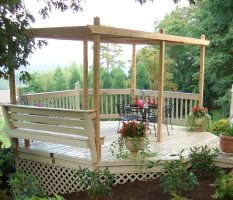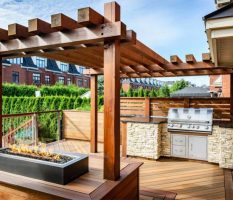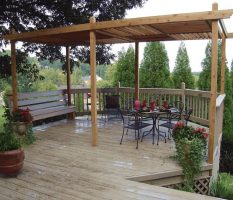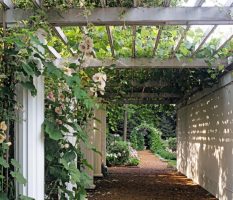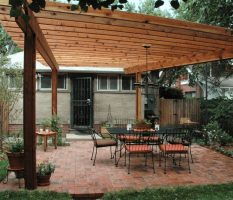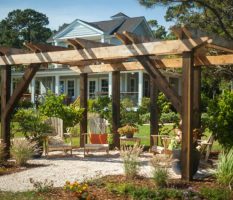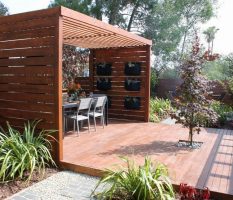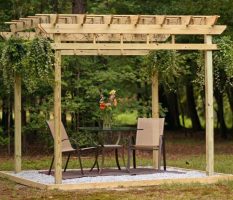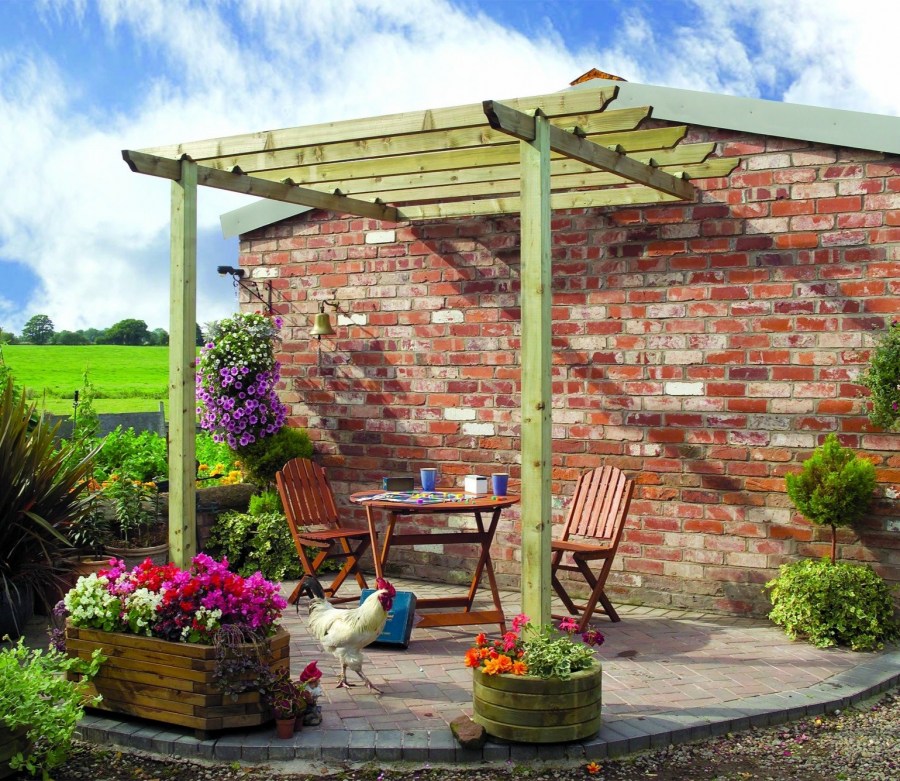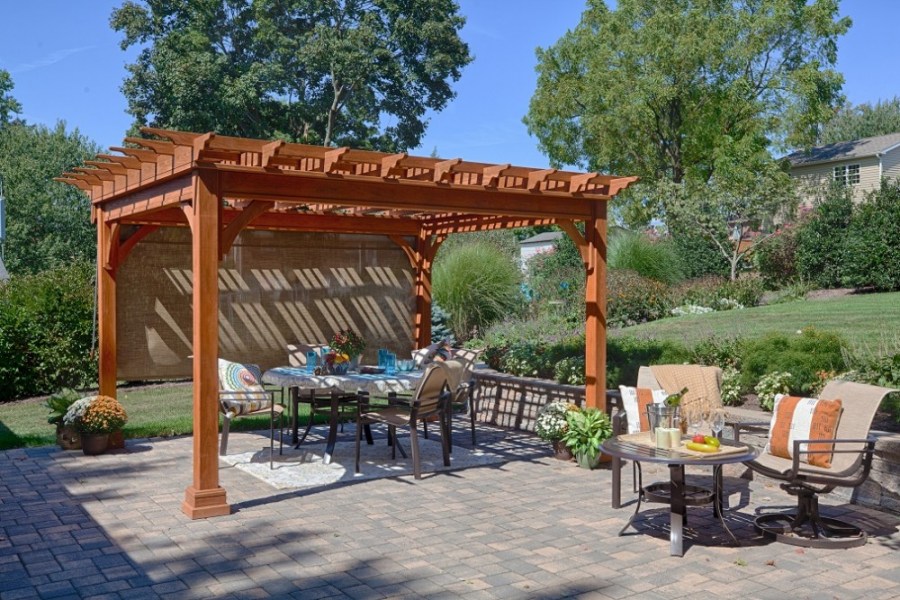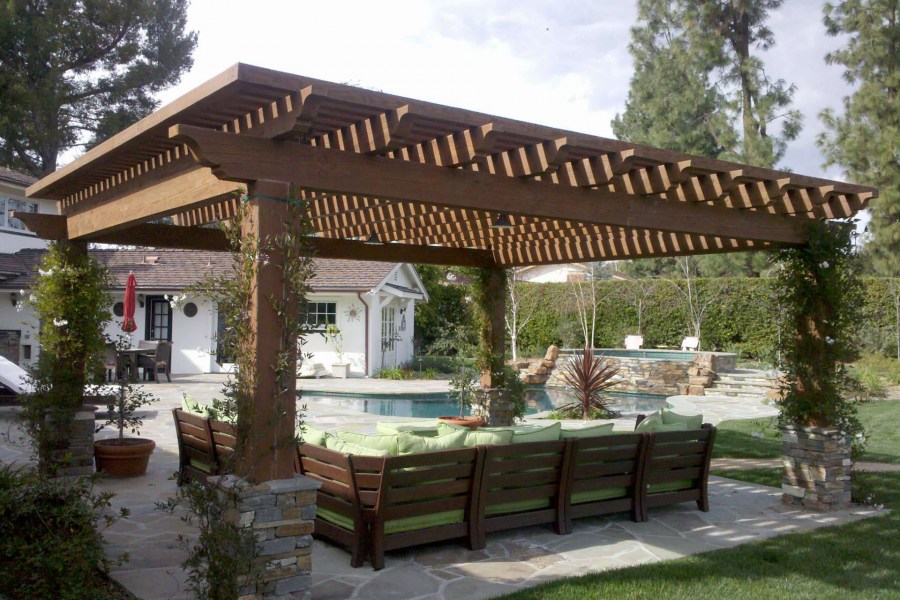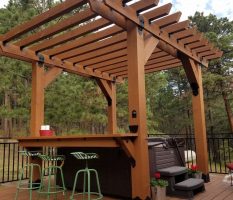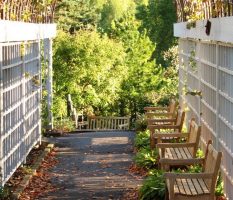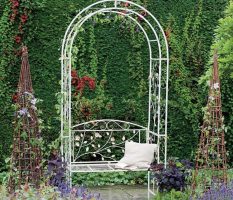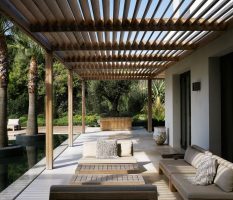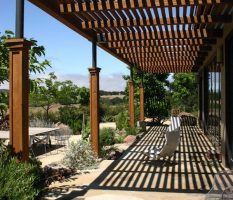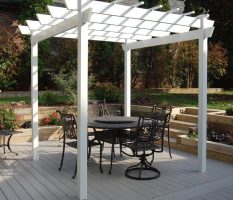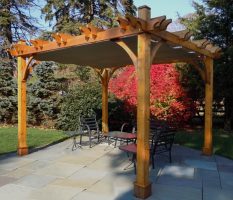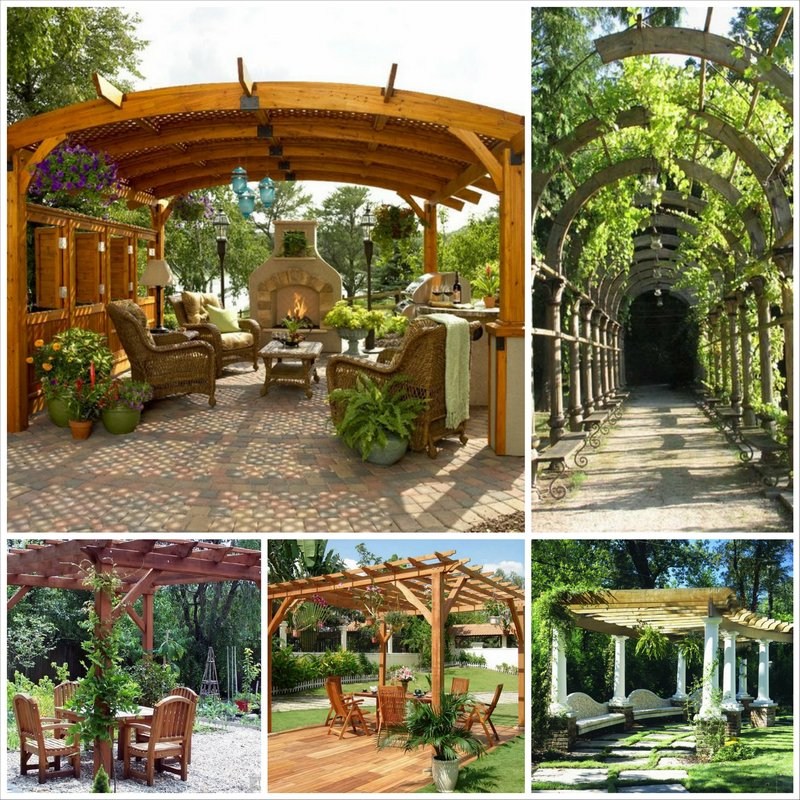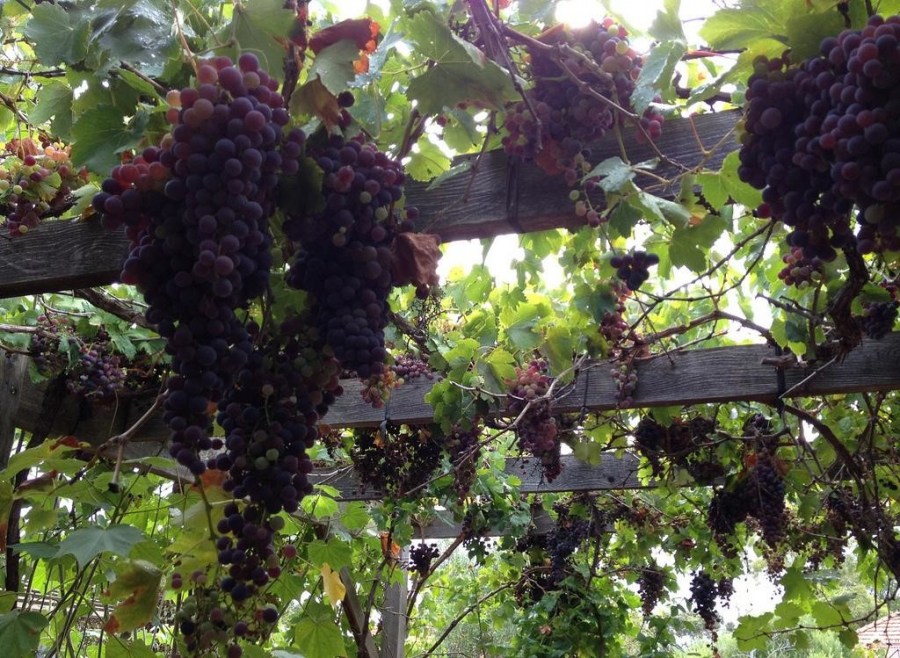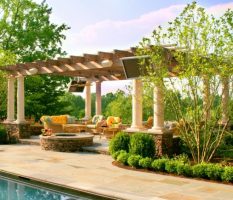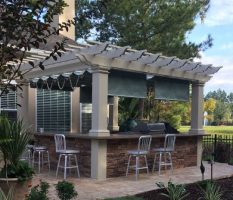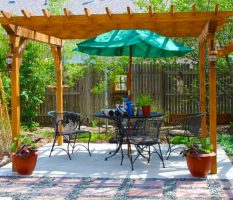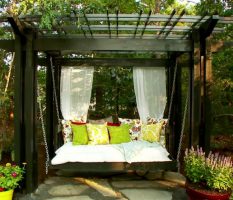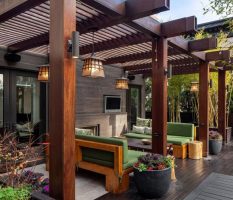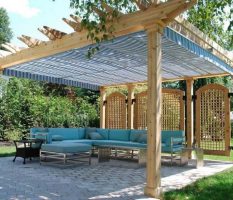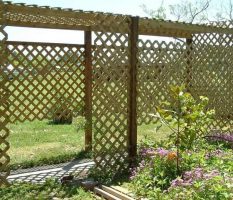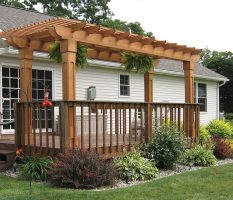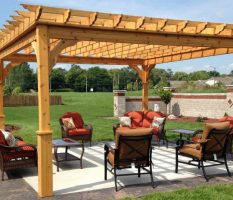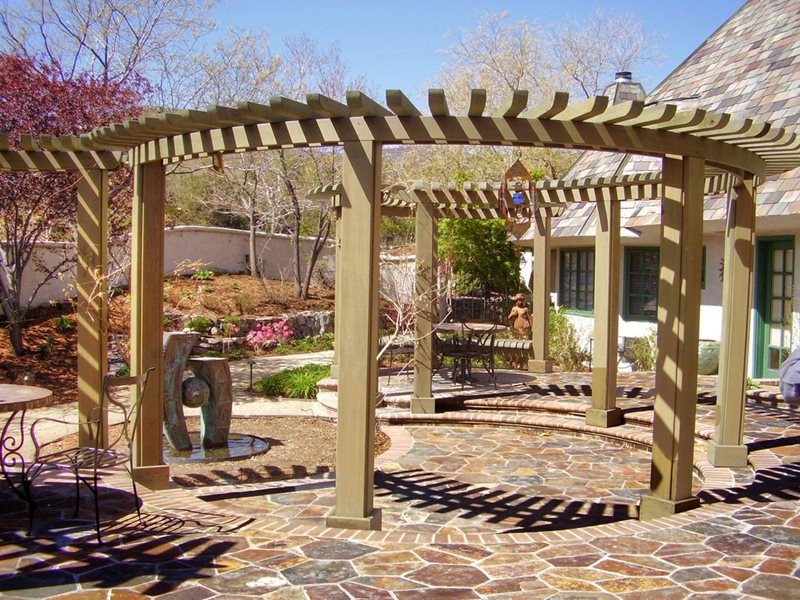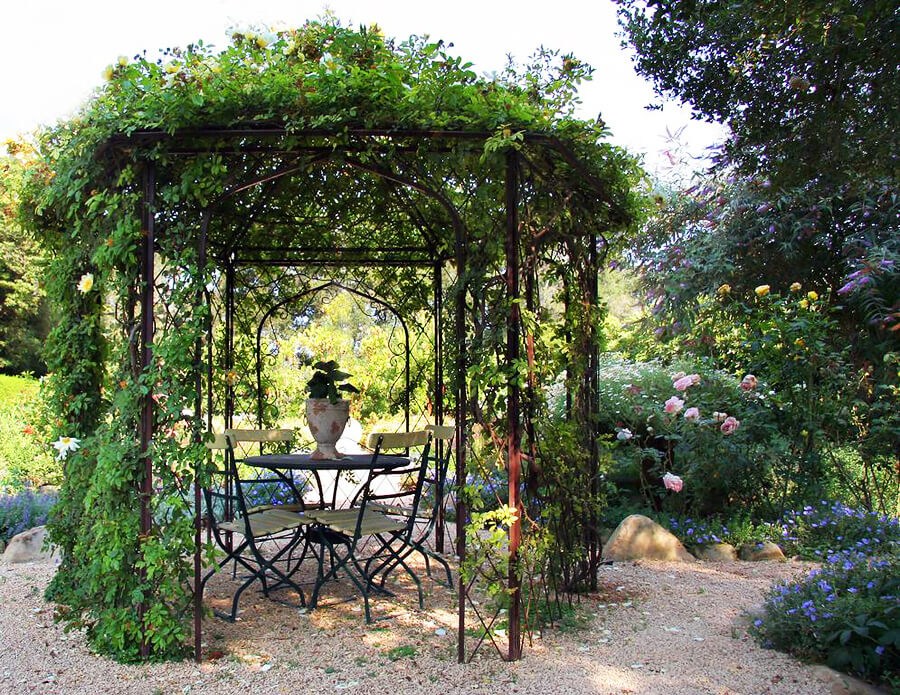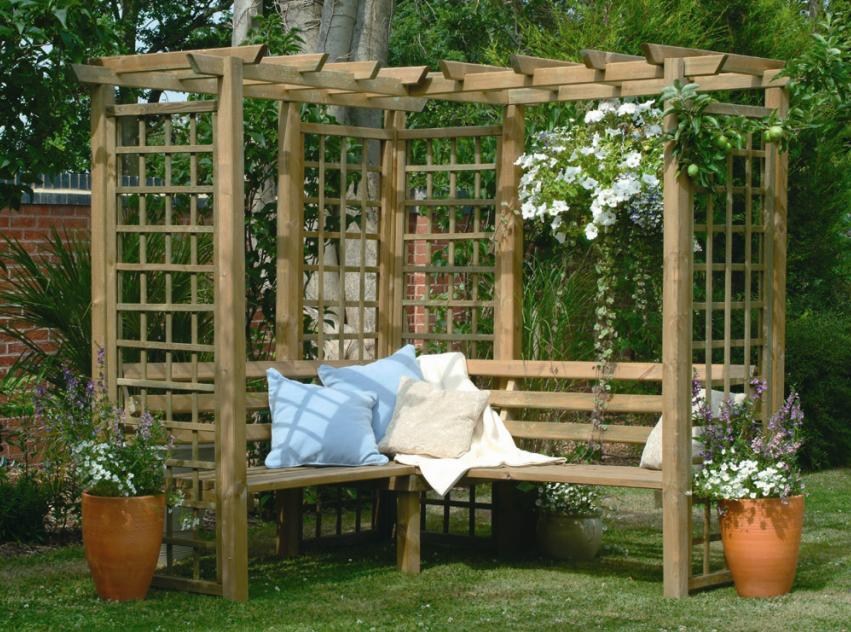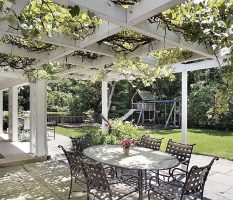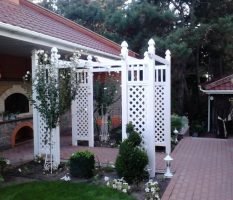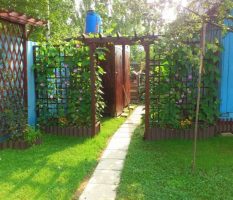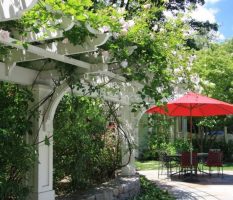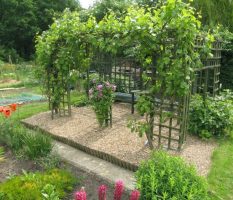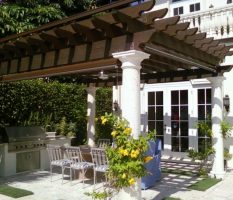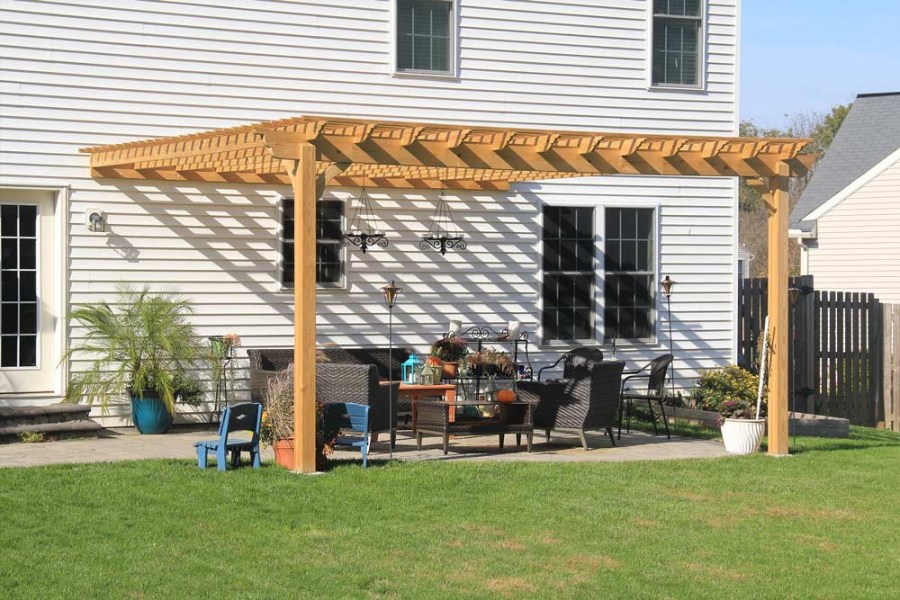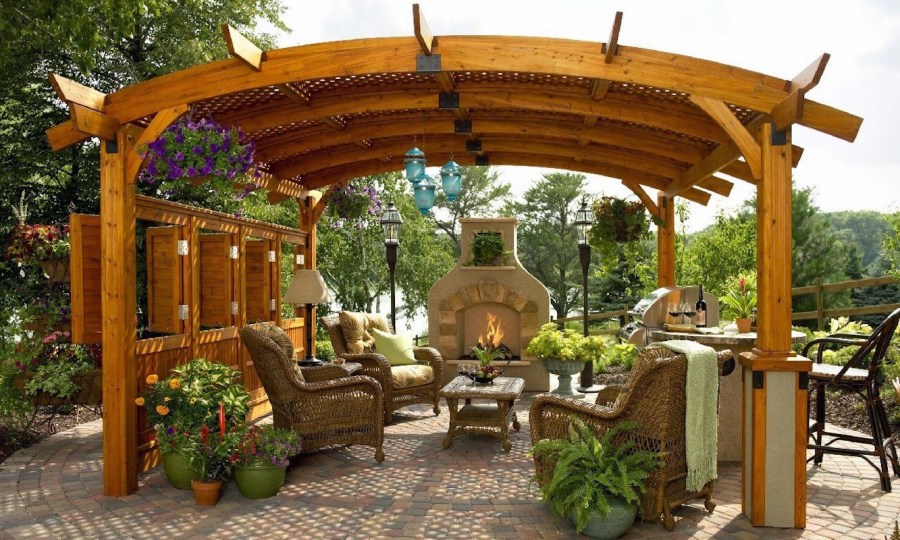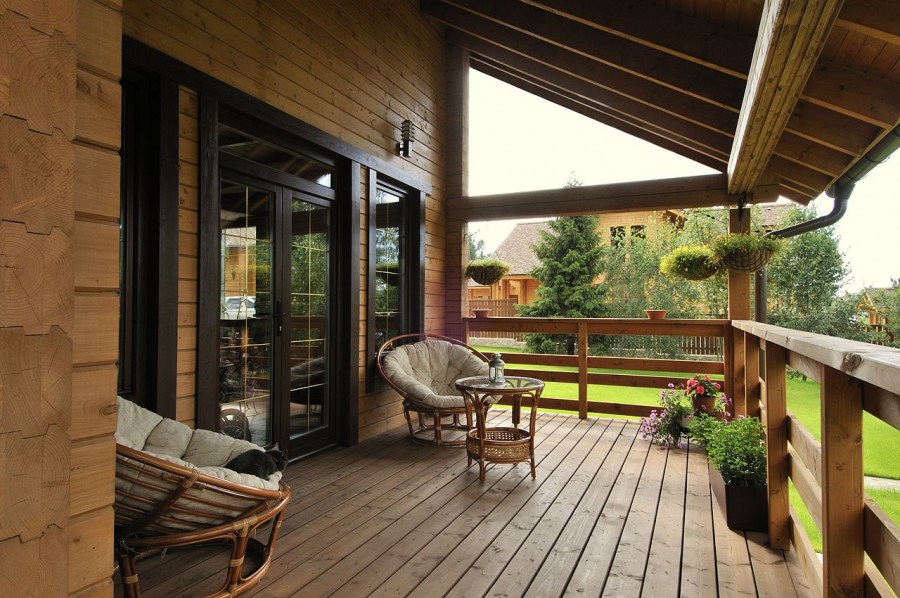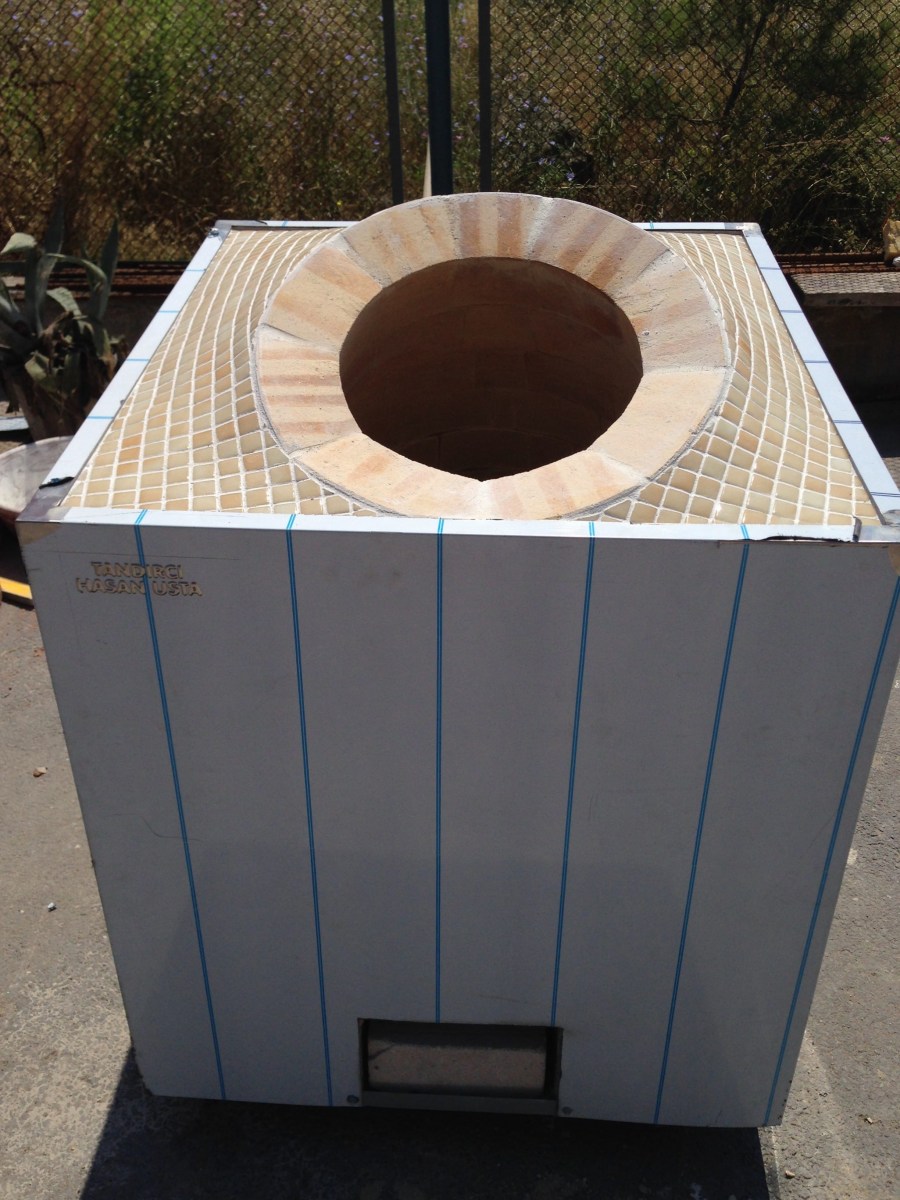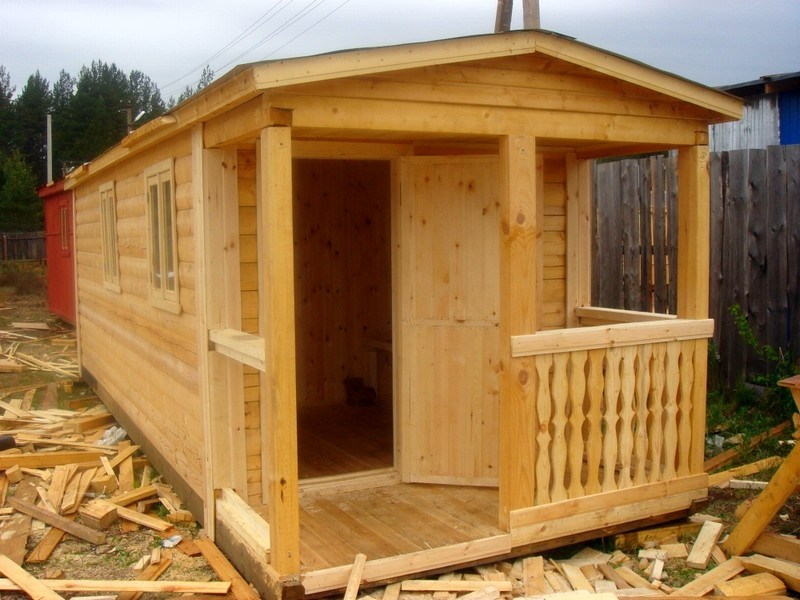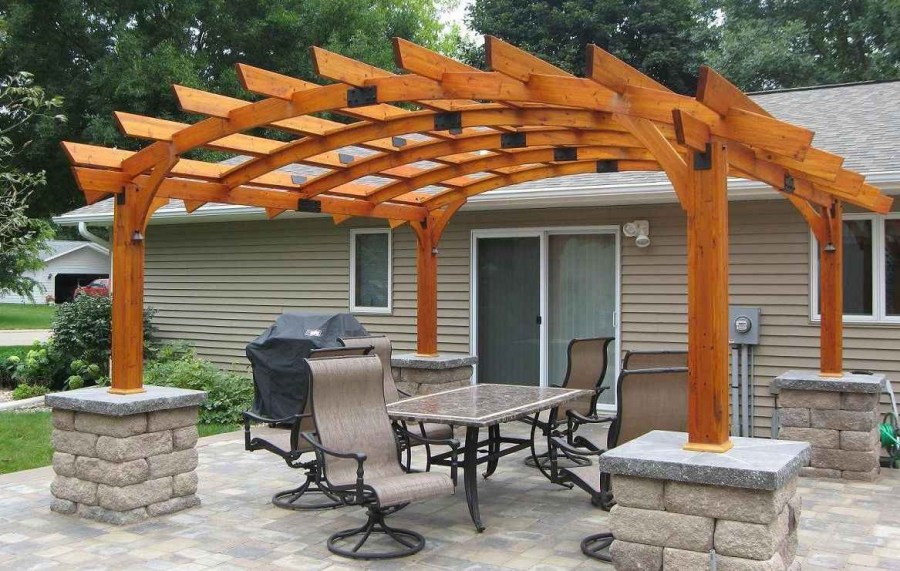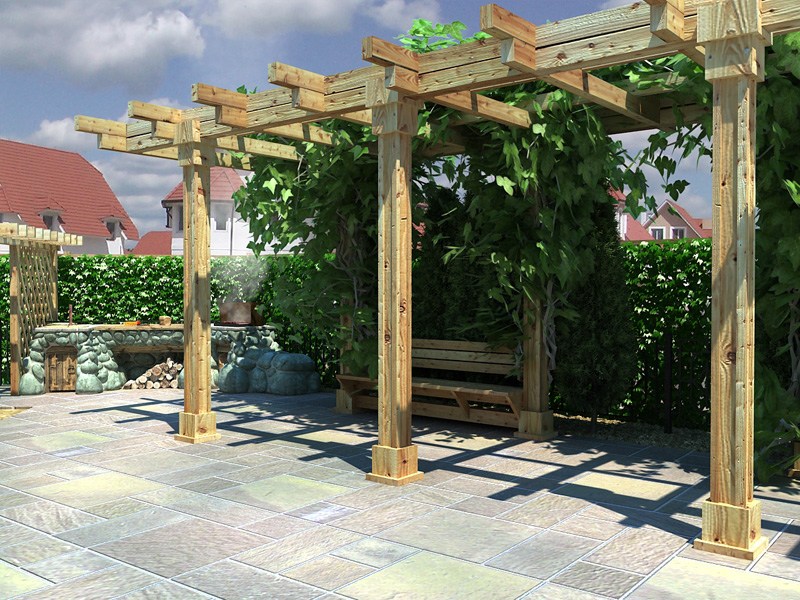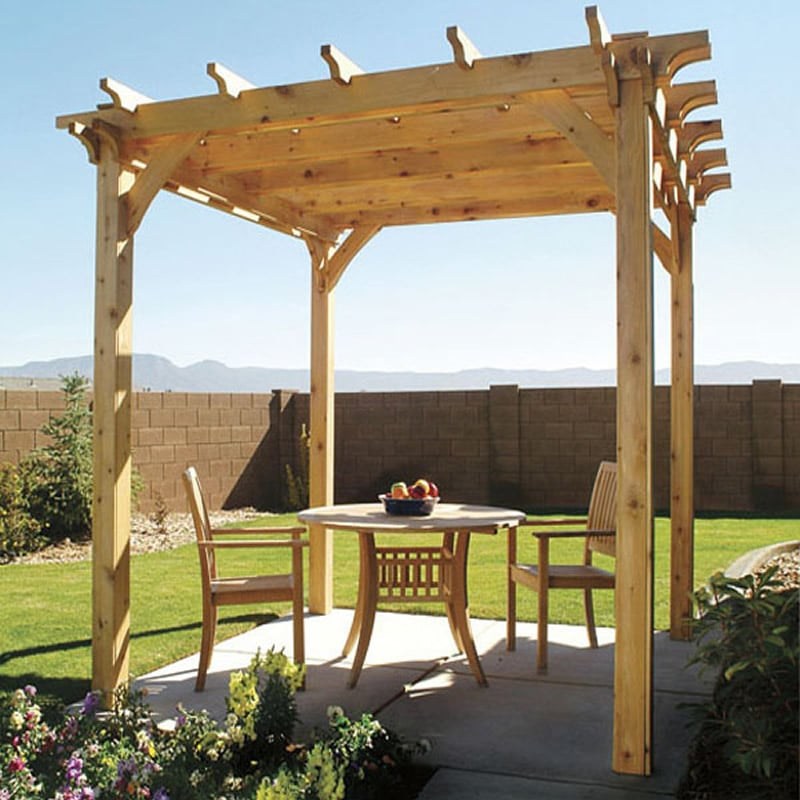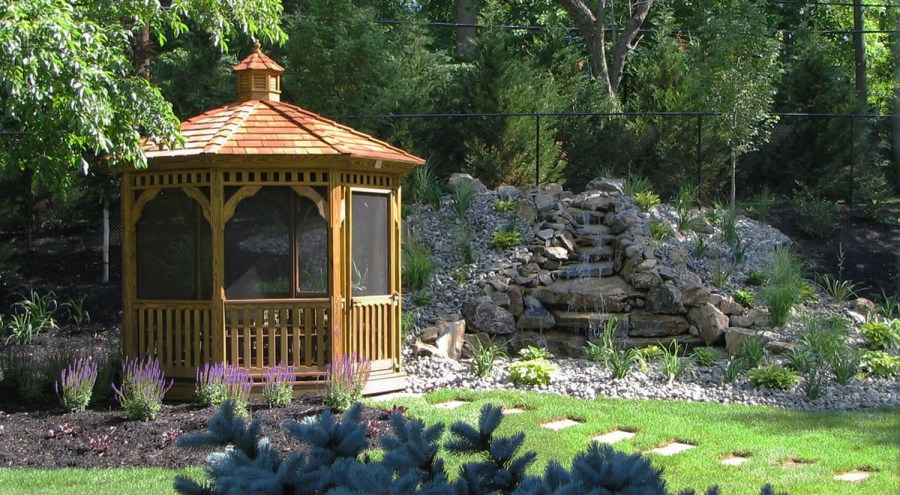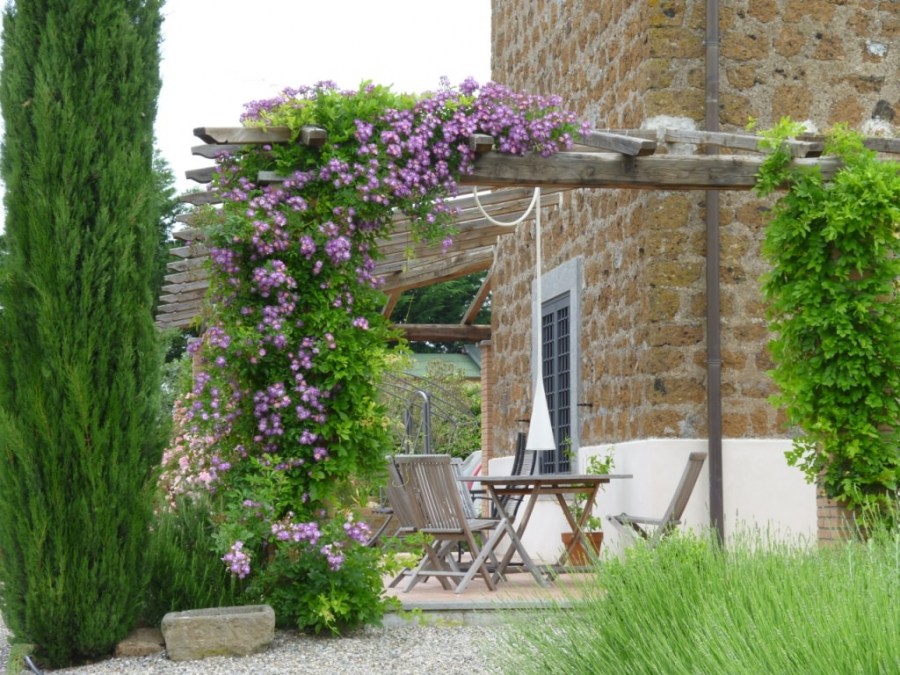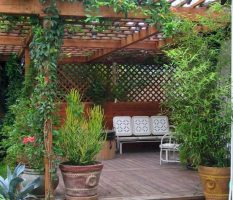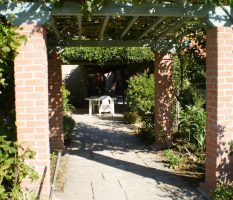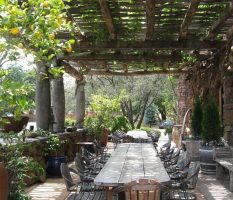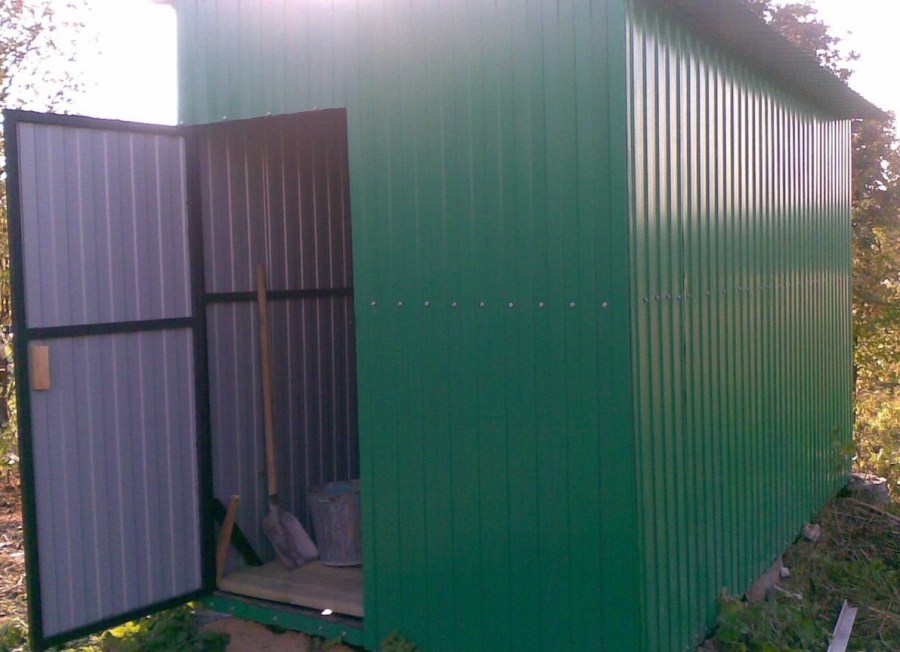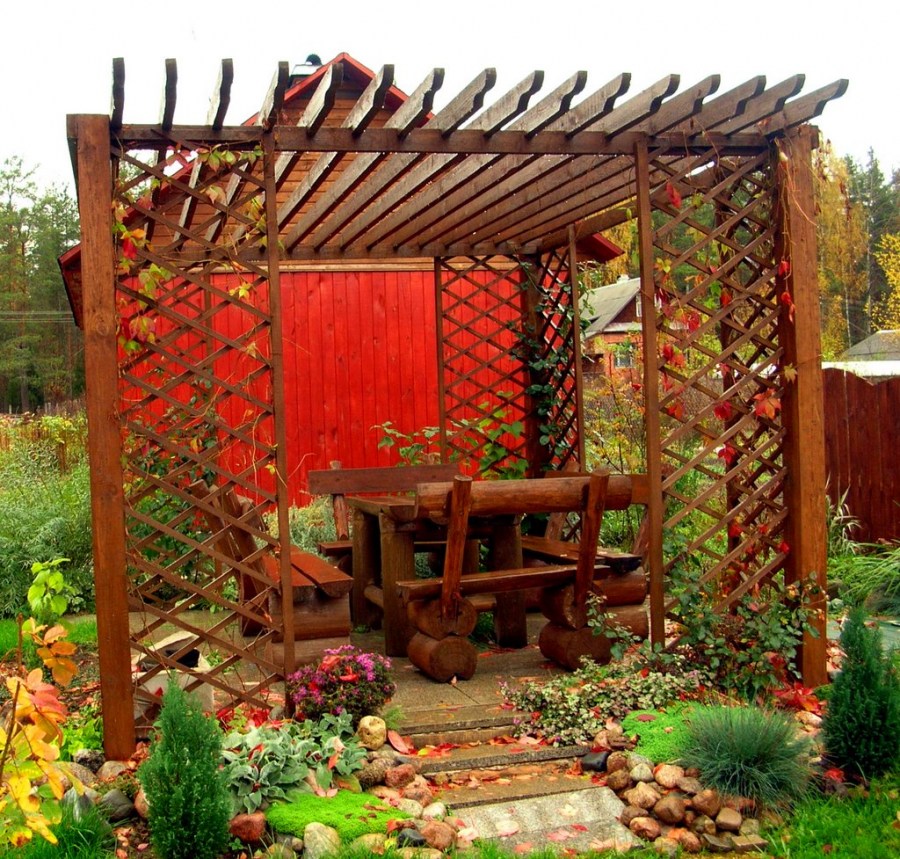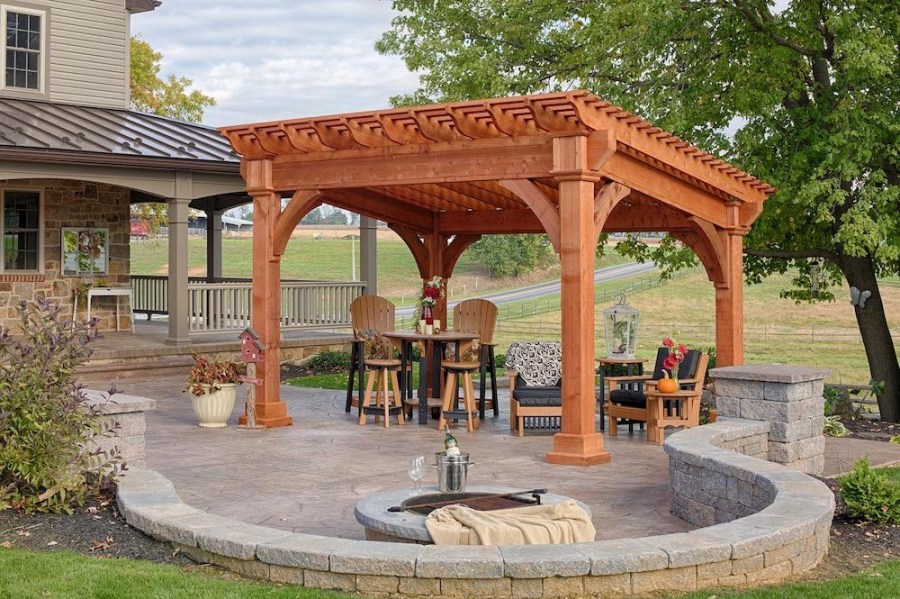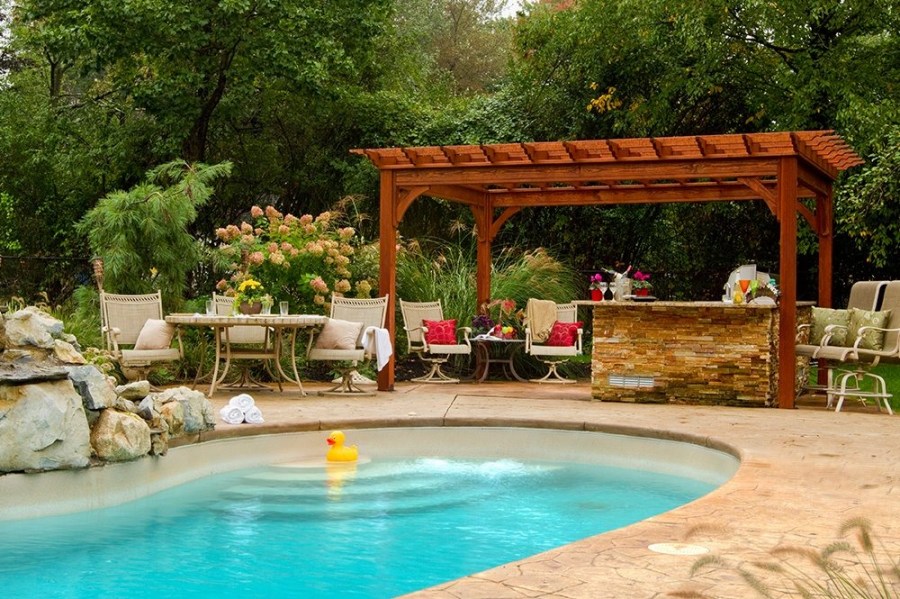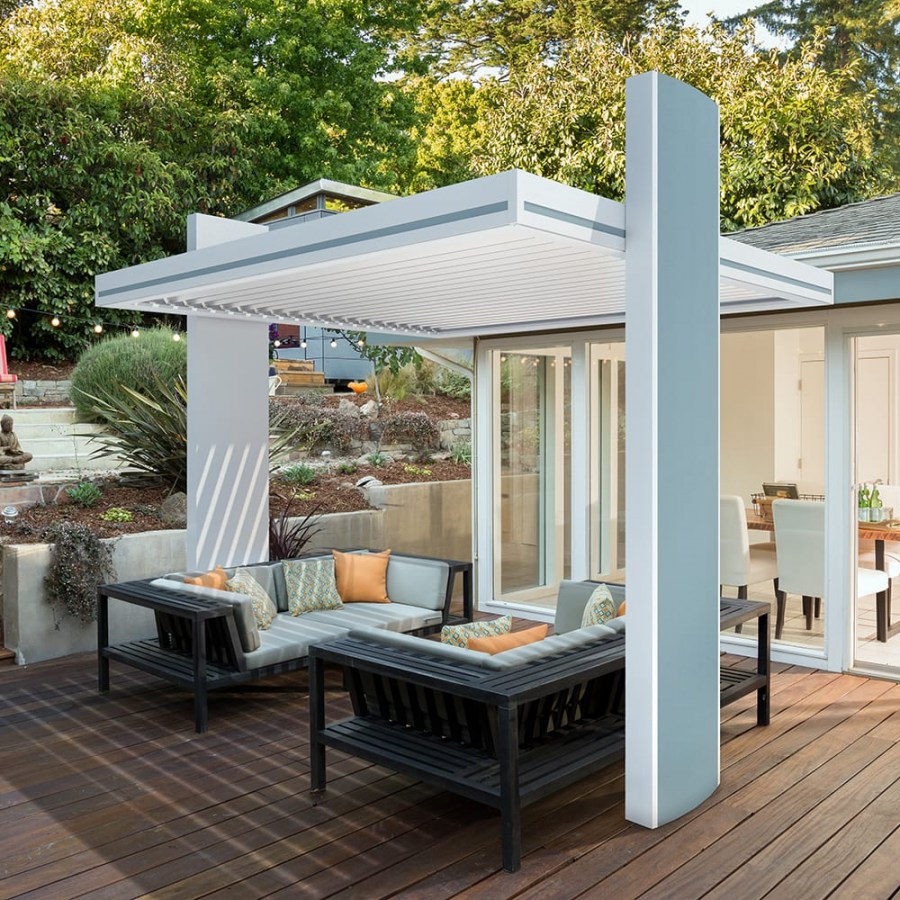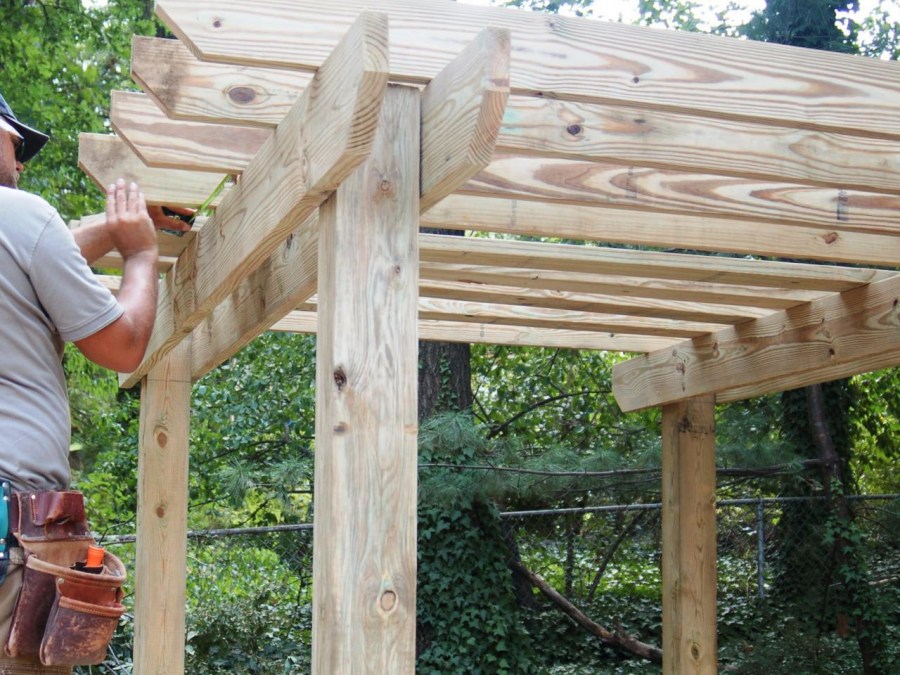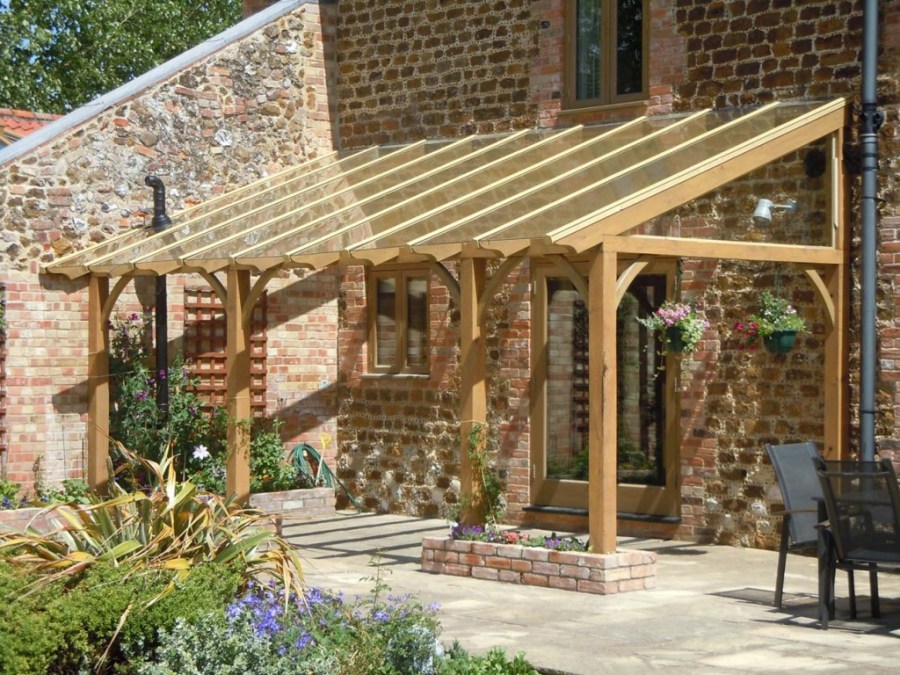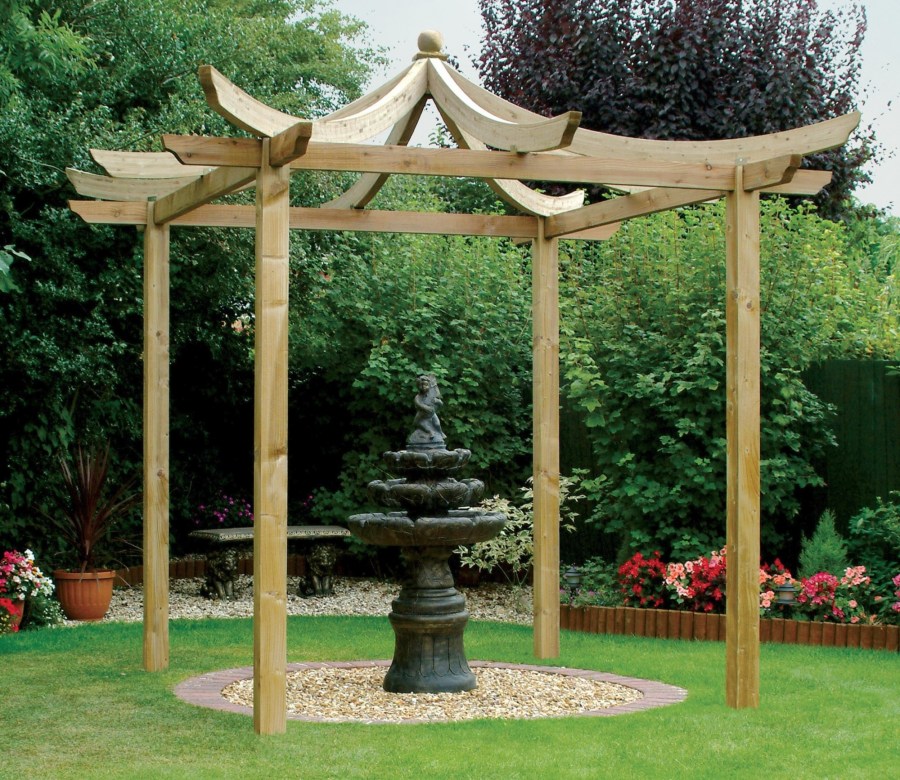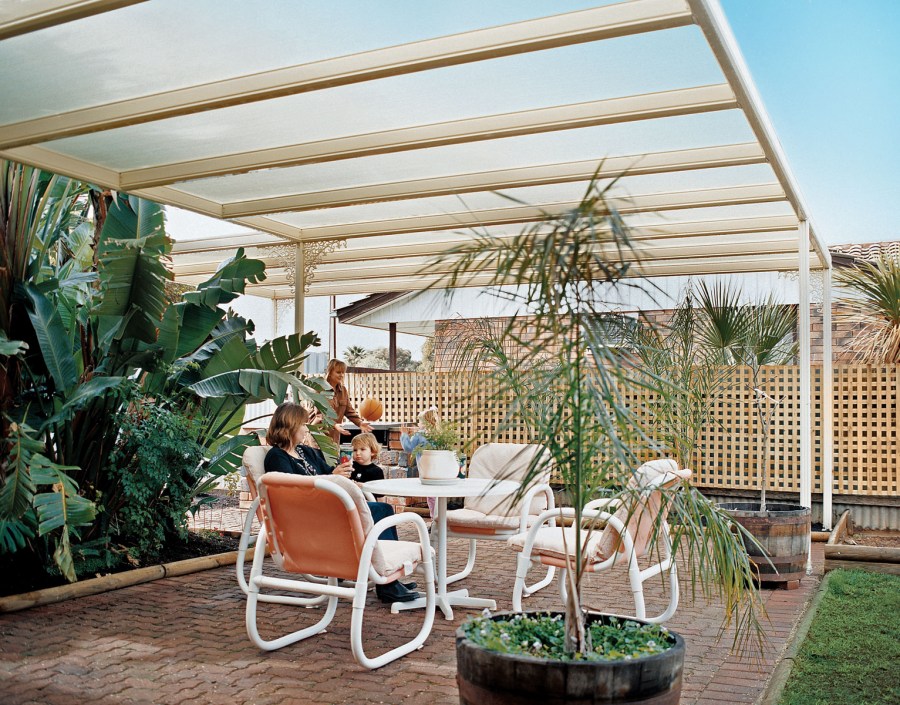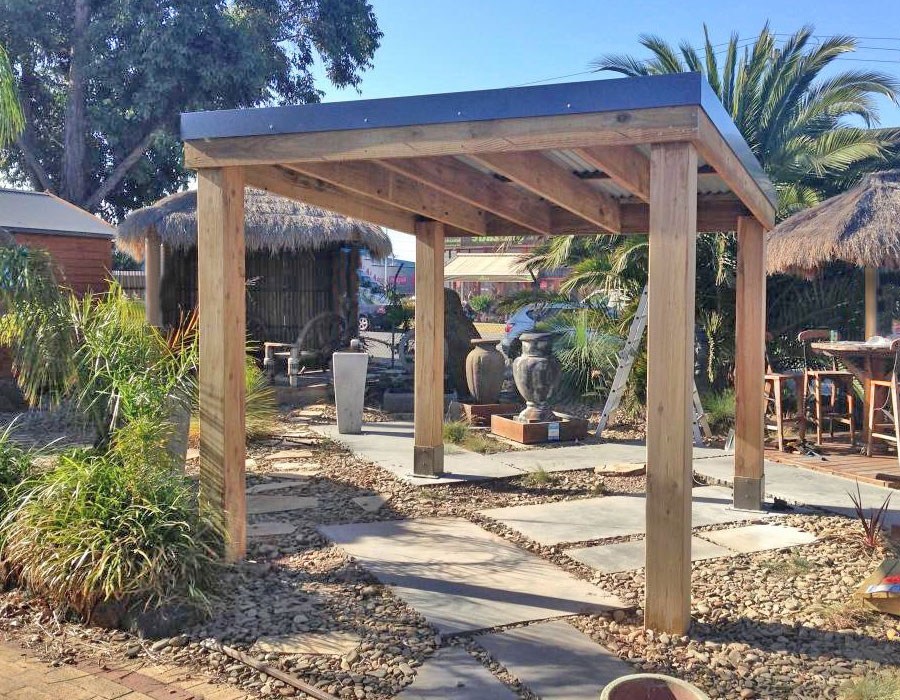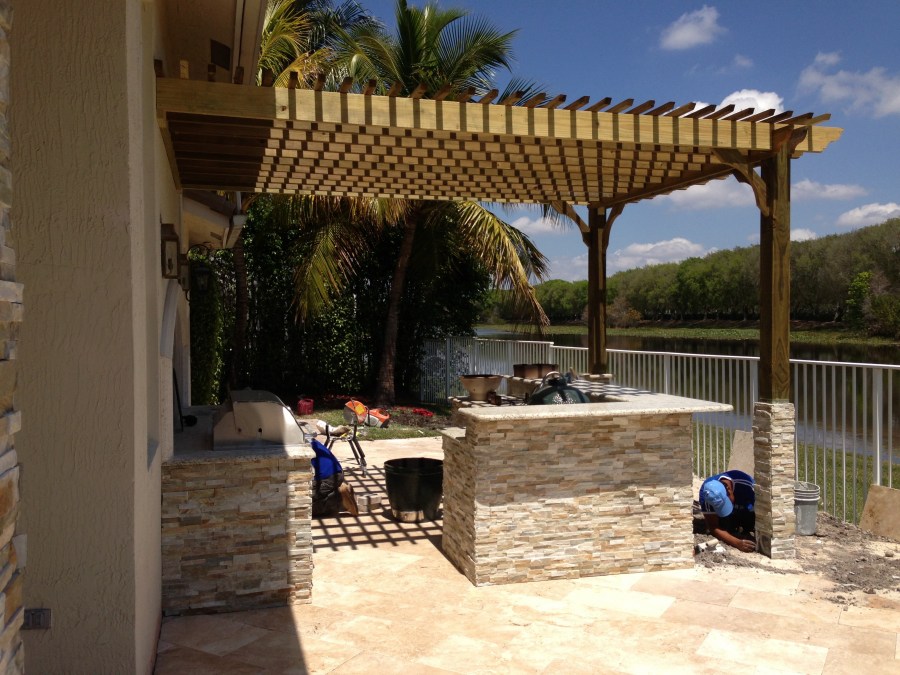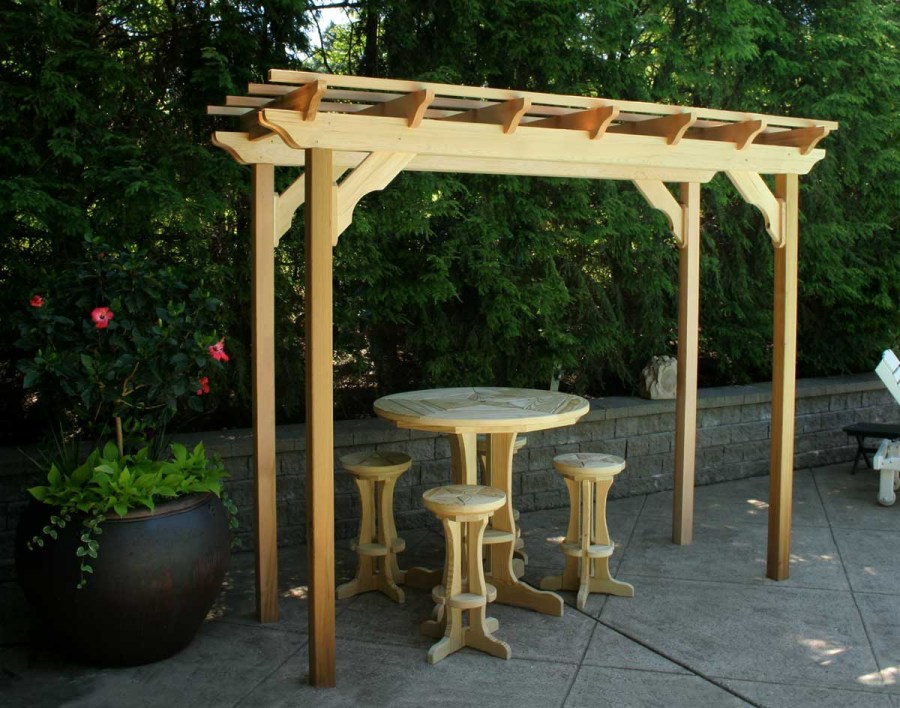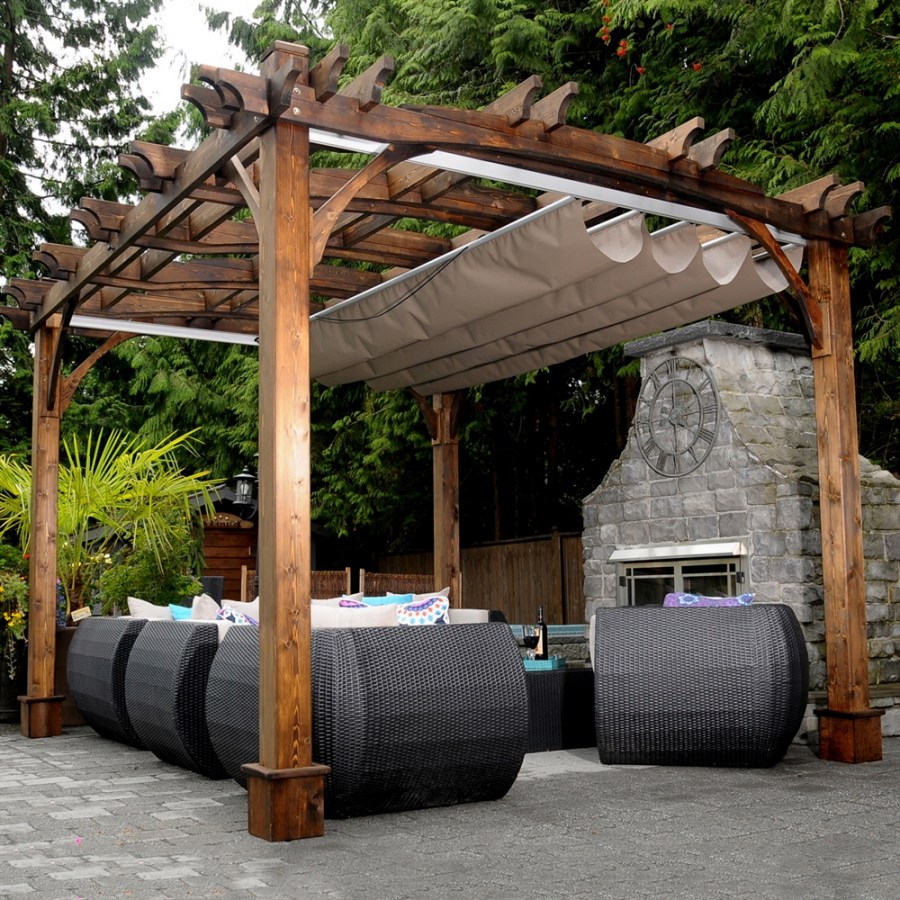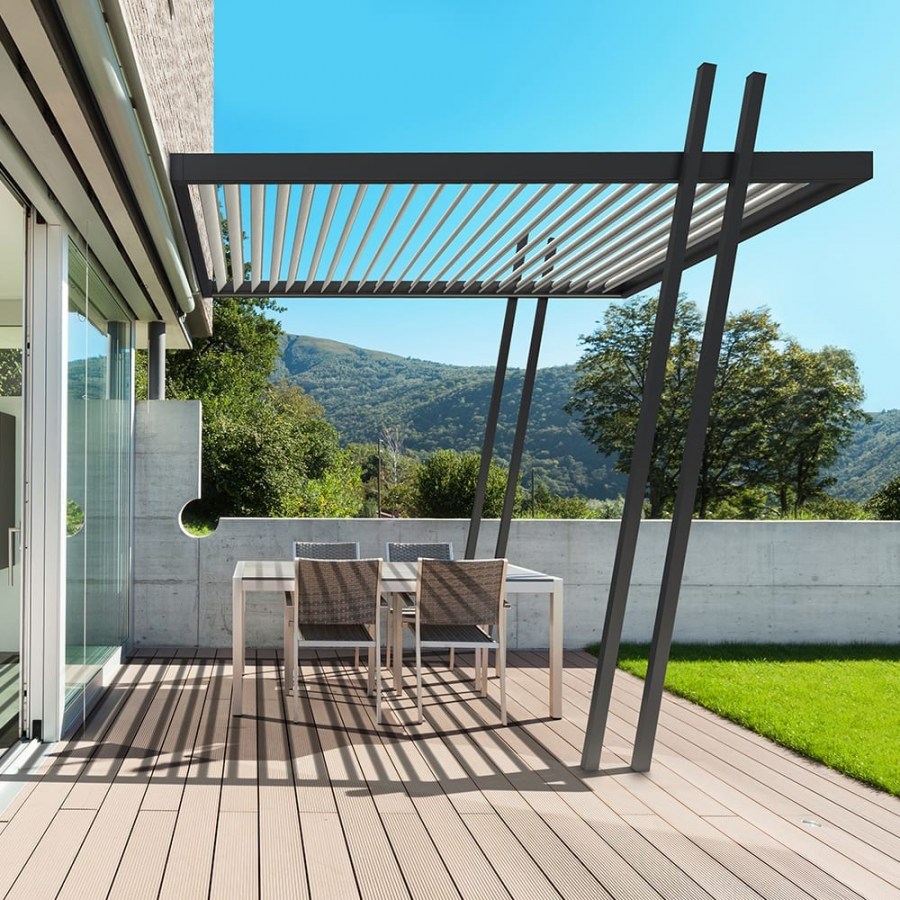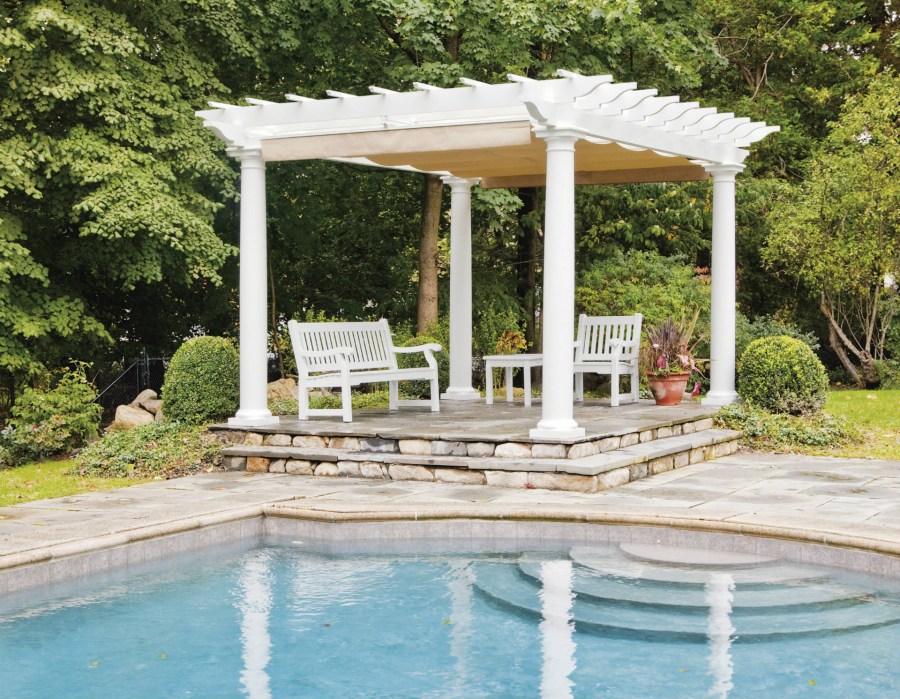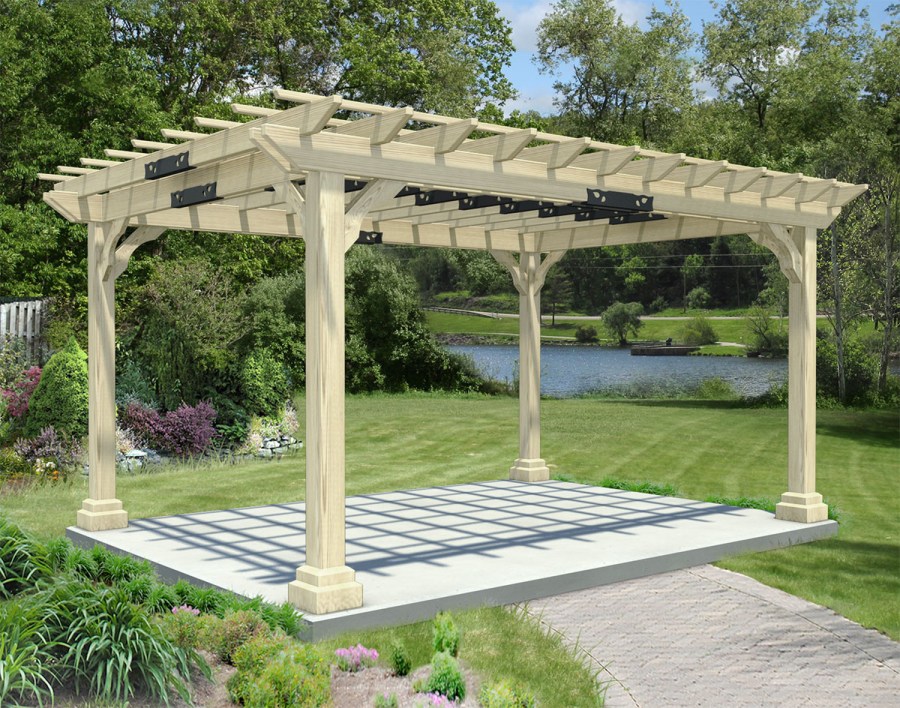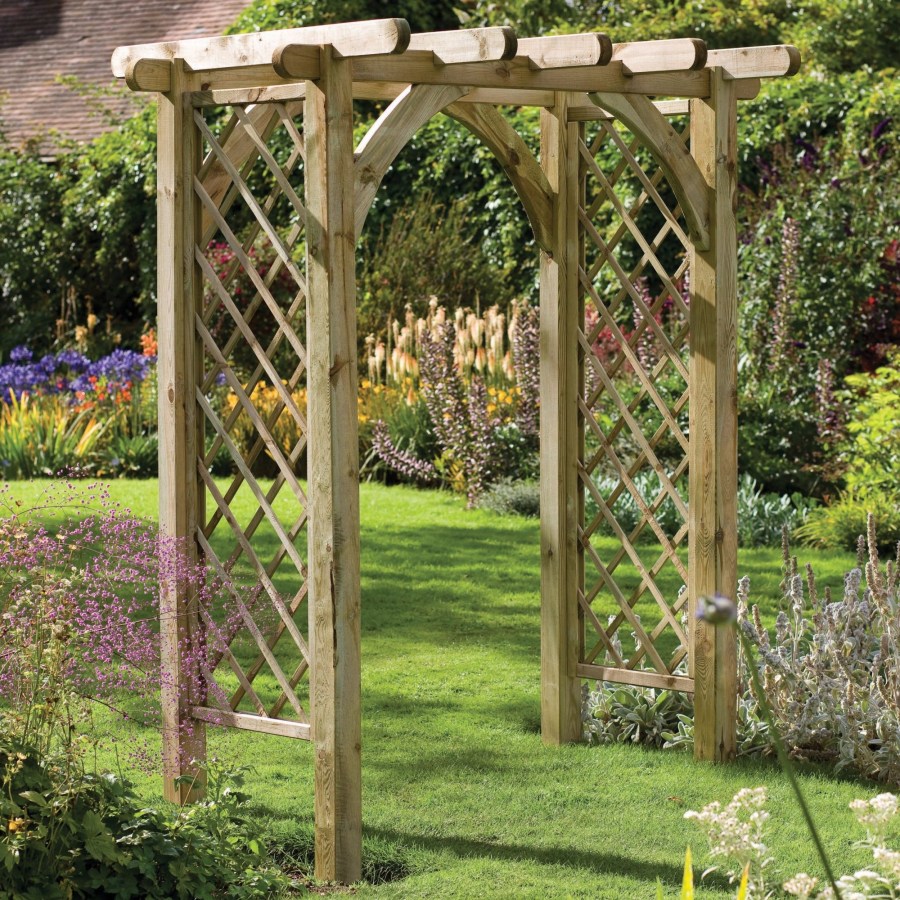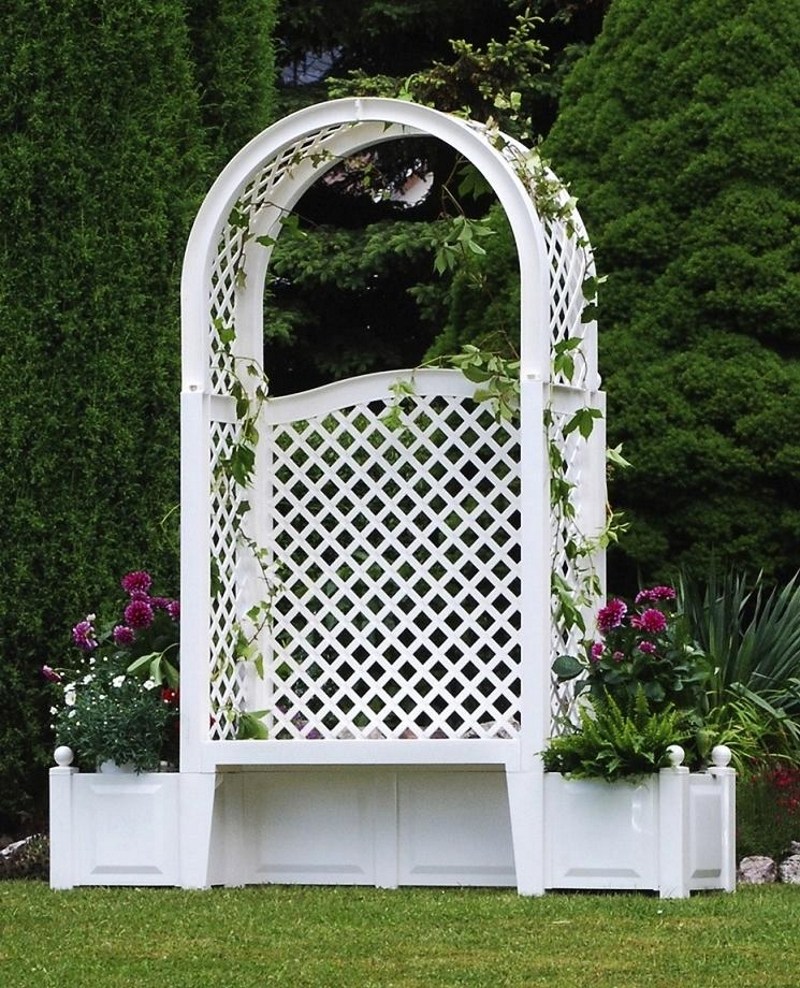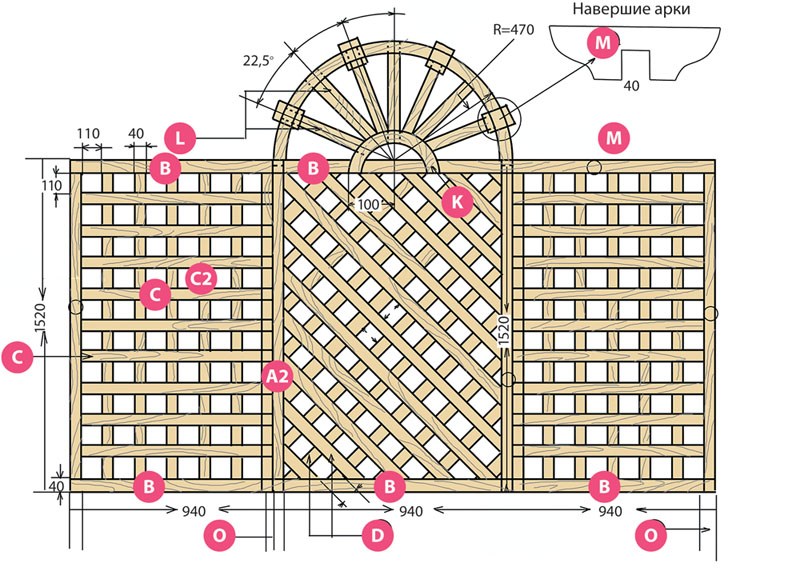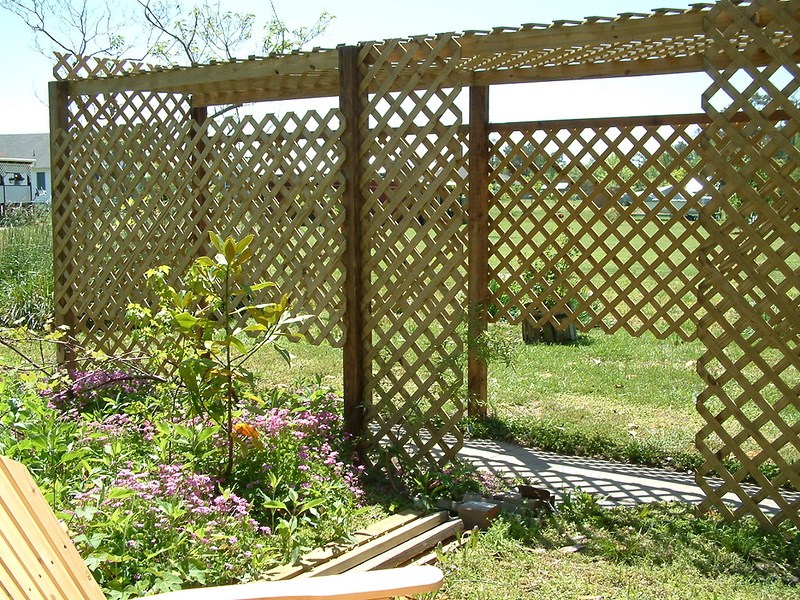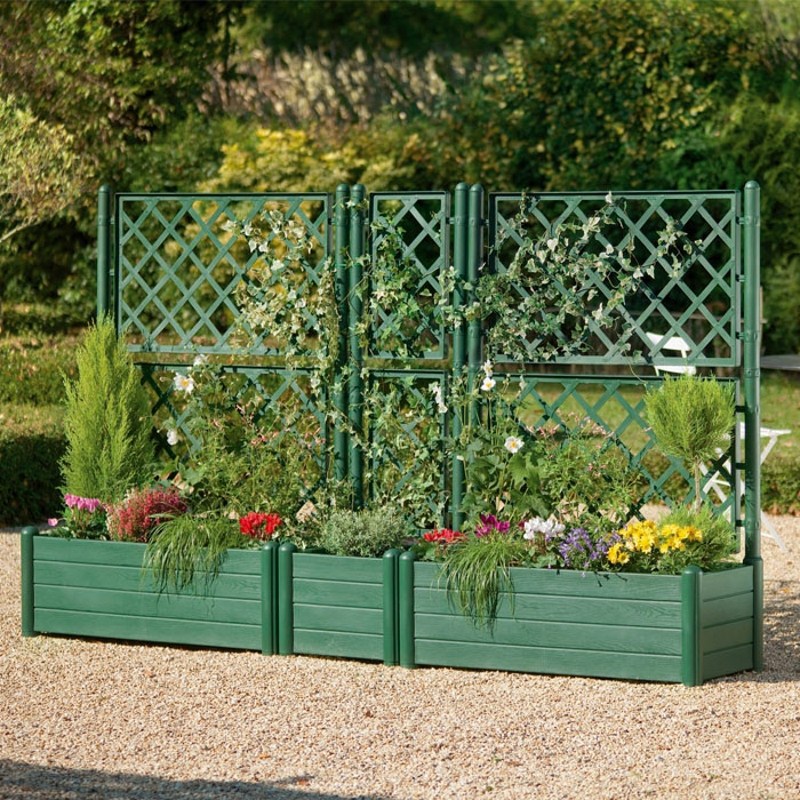Pergola - use in landscape design. 110 photos of design ideas and DIY construction
There is nothing simpler and more beautiful at the same time on a garden plot than a pergola. Everyone can build it independently from improvised means or buy individual parts in a store and assemble them into a single composition. In any case, the pergola in the garden will look stylish, expensive and perform a number of useful functions. Starting from the shade for the owner of the plot on a hot summer day and ending with an excellent stand for ripening bunches of grapes.
What is a pergola, why are we needed, how to create
Pergola is, first of all, a small vertical oasis in the garden, which is created with the help of certain racks, fixtures. A kind, this is something close to the summer altanka, with one difference - the altanka does not have a direct purpose - a support for flowers, vines, grapes. But the pergola performs this function perfectly well.
Basically, they are installed on a summer cottage to create zoning or simply separate parts of the garden, shaded enough to spend their leisure time there. At the same time, flower vines, wildly growing rose bushes or vines are interwoven from top to bottom. In any case, it looks advantageous and expensive.
Most often, gardeners or gardeners find their own solution, how and from which it is better to create such an architectural structure.
The main thing is that it looks appropriate and performs its main function. You yourself can decide what to plant near such an exotic arch, the main thing is that it suits you.
On the net you will find more than one photo of the pergola, because this is a fairly common element of the exterior of the country garden. They come in many different types, for example, the material from which they are built:
- wooden
- metal
- stone
- plastic
- polyurethane.
Each of these structures is designed for a certain weight, do not neglect this. That is, do not hope that the plastic can support the weight of long grape vines with fruits. Too much load will destroy and spoil the pergola, obviously spoiling the overall picture of the beautiful garden. Do not allow this, it is better to think well in advance of the plan for the future construction.
If you want to simply divide your garden into small zones - stop at 2 meter options, if you prefer a series of arches creating an integral corridor - turn your attention to higher specimens.
For example, a pergola created with your own hands can reach a height of 4-5 meters. On these, usually grow wild vines, hops, ivy, forest grapes. This is very practical, because a hedge of this type will protect from the winds and the sun, from the spring to late autumn.
And if at the same time to use seedlings of cultivated grapes, then in the fall it will be possible to please their loved ones with a good harvest.
Differences in the types of garden arches for plants
Pergolas can also be:
- permanently installed
- collapsible.
Collapsible are quite rare, they are used by gardeners mainly in flowerbeds seasonally. That is, for the summer period, when flower decorative cultures bloom, they are harvested. For the period of colds - on the contrary, they are folded and stored in the garage.
Usually these are not large designs used for pink or other standard colors. With his help, it is possible to create good, vibrant compositions.
Stationary structures are a complex (or not so) multilevel structure into which, like a ladder, the branches of a plant are woven, thus forming a living green wall.For the winter, such a plant can be pruned or wrapped, and the design itself remains unchanged in place.
Often, among permanently installed, gardeners choose a pergola made of wood. The foundation is poured from a concrete mixture or expanded clay-concrete mortar (it is more wear-resistant and durable).
Next, wide wooden beams are installed that can withstand the weight of the roof, side walls with the plant. Among such structures with roofs, it is customary to distinguish:
- rounded roof arches,
- rectangular arches,
- fan-shaped arches
- straight and with a sloping roof.
The names speak for themselves, and the owners of summer cottages usually decide for themselves which arch pergolas are best built to be practical and pleasing to the eye.
Rounded roofs look more romantic, complement the delicate flower garden, rectangular roofs add rigor and neatness to any garden. Fan-shaped arches will be appropriate for small gardens and plots that need to be divided into zones.
Creating an architectural unit yourself
Online for everyone is available instructions on how to make a pergola. Everyone, even a beginner gardener, guided by simple secrets, will be able to create such a miracle himself, without actually buying anything expensive. Everyone can find most details for a pergola at home.
Moreover, you can install it absolutely on your own, for this it is enough to adhere to a few simple rules:
Observe proportions. The landscape design with a pergola will look good only if you observe the size ratio of the arch itself and the garden as a whole. A large, bulky design will look out of place in a small suburban area, and at the same time, a small one in a huge territory will simply be lost, fade.
Try not to overload the arch with the number of crossbars, despite all the necessary strength, it should remain light, airy, unobtrusive.
Do not forget that you need to consider that plants will grow and grow heavier over time. In advance, calculate the total weight of the structure, together with the plant, so that later you do not have to strengthen it with additional racks. It is better to immediately make the correct calculations, so as not to worry about this later.
Choose the right plants for pergola. For high, choose longer trunk, for low, you can use two-meter stands, which will be quite enough.
Be sure to treat the stand with an anti-corrosion agent, both wood and metal. So you save yourself unnecessary worries and problems for a long time.
Based on the specific purpose of such an architectural unit, the possibility of rusting or damage by external stimuli. After all, your gazebo will be exploited under the influence of rain, snow, sun.
Gazebo
With the right selection of plants and the design itself, you will get an excellent pergola pergola. Here you can spend your free time alone or with your family. Invite friends, boast about your construction, please yourself and loved ones.
You can always change something in the gazebo itself, but the essence of the pergola, namely the constant proximity to nature, cannot but become a real find for your home.In fact, each garden plot has a place for a gazebo, but for some reason, not all people are ready to become owners of such a wonderful design.
Alone, because they are supporters of more practical simple designs. Others, because they are not ready to constantly care for fast-growing plants. But most of them really grow rapidly and require that they be cut, watered, sprayed. Without this in any way, every beauty requires human hands.
Special attention is required to pergola from metal. Welding it is not difficult, it is enough to have initial skills in working with welding and an idea of what you want to have in the end. You can even draw a rough plan, and then implement it in metal.
For this design you will need:
- several long squares (2-4 meters, depending on the length you have planned);
- squares for rigid connection of squares at the lower and upper level;
- reinforcement - for transverse and vertical supports under the plant.
Before you begin, you need the appropriate attitude - be sure that your pergola will be the best!
Photo pergolas
Crafts from plastic bottles: 80 photos of creating a DIY decor
Decorative wood chips: application, advantages and design features (110 photos)
Hanging chair: 85 photos of design solutions for the site near the house
Alpine hill - 85 photos of the device construction and care for the design element
Join the discussion:
